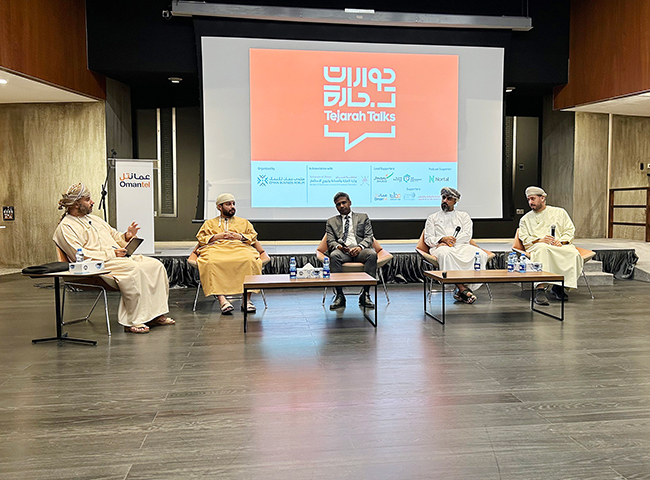
 Prasanna Rajendran, Head of Business, for Kissflow’s Procurement Cloud
Prasanna Rajendran, Head of Business, for Kissflow’s Procurement Cloud
The rapid strides with which digital technology is being adopted by businesses are transforming the way businesses operate. From finance to procurement to marketing, digital technology empowers teams with better control over operations.
Taking a view of this euphoria that looks at modifying the paradigm of the industry, The Middle East Procuretech Summit 2023 held last month in Dubai, UAE provided a platform for the regional procurement fraternity to gather and discuss the new era of Digital Procurement with topics such as Cloud procurement, E-Procurement Solutions, Supplier Relationship Management (SRM) and many such industry-specific discussions.
To get key insight regarding the future of the procurement function in the Middle East, Gulf Industry, spoke to Kissflow, who was the Gold Sponsor at this event and Head of Business at Kissflow Procurement Cloud, Prasanna Rajendran who delivered a keynote presentation at the event.
In an exclusive interview, Rajendran, an industry expert, specifically, explained various aspects such as: how cloud technologies serve as key drivers of the success of the procurement function; why the future of procurement innovation depends on cloud application services; the opportunities and challenges in cloud adoption for bridging the digital transformation divide and others.
How's the procurement tech industry evolving in the Middle East region?
Middle East enterprises, particularly medium to large ones (500+ employees) are advancing rapidly along the procurement tech maturity curve. In smaller organisations, it’s rare to have dedicated procurement functions, and tasks related to procurement are largely carried out using email and for internal purposes, even chat. However, at a larger scale, the volume of transactions and requirements of multiple departments makes such an approach highly complicated and difficult to track. It is in these larger enterprises we see specific procurement functions being set up, and the utilisation of platforms such as Kissflow Procurement Cloud to digitise sourcing and procurement, creating opportunities for the automation of tasks such as approvals, creating orders and so on.
Another major evolution in the procurement tech space is that today, it is no longer just the IT teams that are managing the buying and customisation of the software platforms needed for the digital transformation of the procurement function. Instead, it is the procurement teams themselves that want to take ownership of the software, and they want to be able to manage customisation themselves. This presents a challenge when following the traditional approach, for example, leveraging ERP systems for procurement automation as these are notoriously difficult to customise – even for skilled IT teams. So instead, we are seeing a preference for cloud solutions with Low Code and No Code capabilities which can empower procurement professionals to create the customised workflows they need themselves.
Would you please comment on the future of the procurement function in the Middle East?
There seems to be an upward trend in businesses investing in all aspects of procurement – people, process, and technology. This is enabling them to advance towards the goal of turning the procurement department from being a cost centre to a value centre – which represents the future of the function.
This diverges significantly from the traditional view of procurement as nothing more than a support function within the enterprise. But during the pandemic, we started to see this mindset change with business leaders looking to turn their procurement teams into strategic partners in the business. Earlier, there were no specific KPIs placed on procurement teams and the only ask beyond facilitating the procurement of goods and services was to maximise cost savings by negotiating with suppliers.
However, as more technology has been introduced into the processes of the department, efficiencies have increased significantly. Where hours were previously spent manually executing tasks, today's automation eliminates the need for such efforts, while simultaneously minimising errors. This time can then be redirected into value-add activities. Technology also delivers analytics and insight that help uncover areas for optimisation and enhancement and drive strategic decision-making.
What is the current size of the procurement tech market and what are your projections for the market over the next 5 years?
Recent research by Fortune Business Insights forecasts that the global procurement software market is projected to grow from $6.67 billion in 2022 to $13.80 billion by 2029 – representing a CAGR of 10.9 per cent over the period.
At Kissflow we are certainly seeing this momentum in the Middle East procurement tech industry. Over the three years, we have consistently recorded upwards of 60 per cent growth in the customer base for our Kissflow Procurement Cloud platform in the region. And this year, as regional governments push for even further digitalisation of the sector, we are targeting 80 per cent growth.
How can the procurement tech industry help secure trust in global trade and supply chain?
As in any industry, trust is built upon two fundamental principles – collaboration and transparency. This is precisely what cloud procurement technologies enable. For example, in product evaluation, users want to engage directly with suppliers. This wasn’t possible with legacy systems as they were on-premise and therefore couldn’t be conveniently and securely accessed by third-party suppliers. Instead, users and suppliers had to resort to inefficient email or phone-based communications. The one-on-one nature of these interactions and the lack of correct documentation (something that was even more likely to be an issue when enquiries were made via phone calls) meant little transparency in the process and often the buyer in the procurement department being circumvented.
Today, however, with the cloud, access can be made ubiquitous across the globe in a simple, streamlined, and secure manner. This means that all stakeholders can be conveniently kept up to date at every point in the procurement process. This maximises collaboration and transparency which leads to trust being enhanced in the global trade and supply chain.
Can it be a success in use cases such as manufacturing or global trading or supply chain management?
Enterprise requirements and mindsets have changed - they no longer want to change their processes to accommodate the limitation of technology, they want tech that can enable them in their transformation. They want customisability and a better user experience. They are also looking at solutions that can be modified based on the business needs and demands. On top of all this, they also want insights and intelligence. Definitely, manufacturing and supply chain management can benefit from the latest cloud-based low-code/no-code solution. The good thing about it is it can be integrated with existing systems and models and work in tandem.
What are the most pressing challenges in this technology and how to transform these challenges into opportunities?
People's resistance to change and the users’ adoption of new technologies is always a challenge. By having a strong digital transformation strategy, educating the users about the benefits of the technology, getting all stakeholders involved, and implementing proper change management these challenges can largely be overcome. Also, by showing value and starting small, you can then expand.
How can cloud technologies serve as key drivers of the success of the procurement function?
Cloud technologies enable procurement to leverage best-in-class solutions to solve their business process problems and make smarter purchasing decisions. These solutions by their very nature are always up to date so new features and functionalities can be instantly available to procurement teams without lengthy and challenging implantation cycles.
Cloud technologies also empower procurement teams with intelligence and help them in decision-making. The procurement function is becoming a strategic role from a support function. Procurement tech enables them to focus on enterprise value creation instead of manual tasks and follow-ups. It will also provide them with greater transparency and data to make decisions effectively and efficiently. It also helps in enterprise audits, for example, when it comes to audits, the biggest challenge is to keep track of all the contracts, bills and conversations - now it is all stored in the cloud. In these ways, procurement tech can further help in streamlining entire procurement operations.
Cloud technologies also make it possible for procurement teams to realise the benefits of community intelligence i.e. insight that is gained from data from external sources. Consider how this could help during product evaluation. Here users could benefit from reviews or even pricing data, both in their market and international regions, to make the most informed and strategic decision.
Why the future of procurement innovation depends on cloud application services?
This era is all about collaboration. Effective collaboration has become the key element for the success of the procurement function. Cloud applications are designed to be more collaborative by default – they are globally accessible, available 24x7, and introduce an unparalleled level of transparency for all stakeholders.
The collaborative nature of cloud platforms is also what makes possible many of the innovations that are now emerging in the procurement field like community intelligence, supplier intelligence and more.
What are the opportunities and challenges in cloud adoption for bridging the digital transformation divide?
Cloud provides lots of benefits like cost savings, enhanced connectivity, easy data backup and restore, automatic software integration and collaboration. Cloud adoption opens up new possibilities for procurement teams to drive more value to enterprise.
The challenges are mostly to do with people’s resistance to change and not having the right digital transformation strategy. Educating users about the benefits of cloud adoption and by choosing the right product and having a well-defined transformation strategy will help in bridging the gap.


